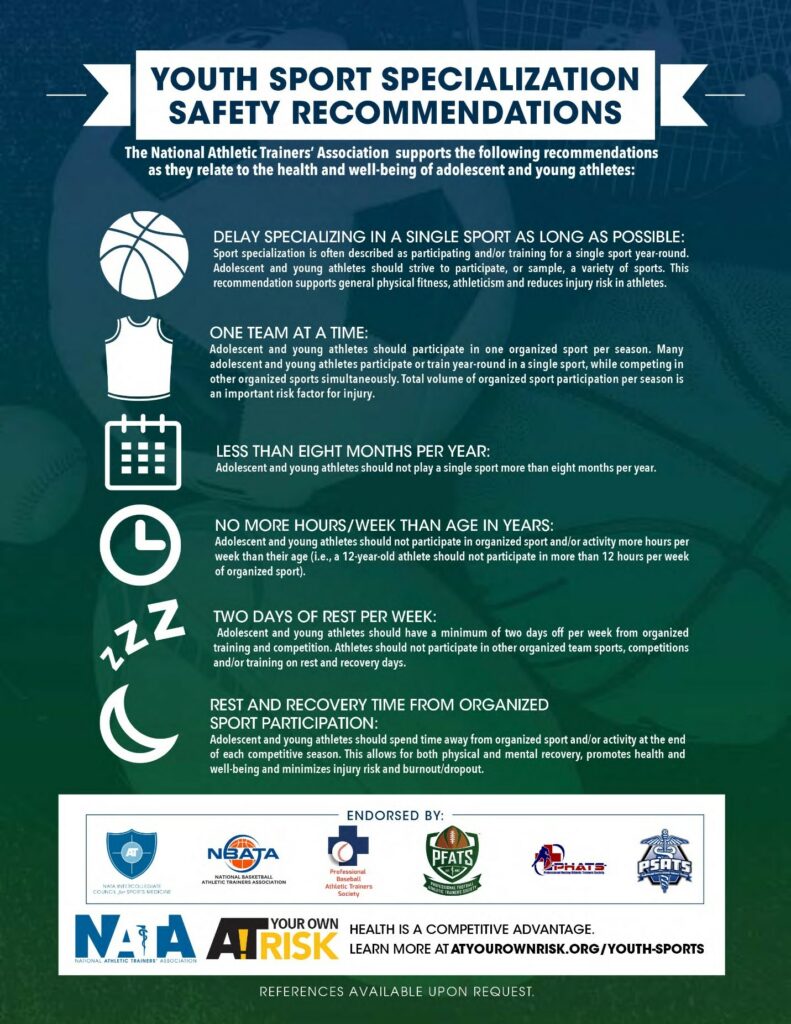
By Robert Herron and Charles Freeman |
Youth sports in America has experienced a transformation over the last forty years, from glorified sandlot teams to a $20 billion industry. To be clear, youth sport is important for youth health and society at large, when experienced in a developmentally appropriate manner.
However, a move towards emphasizing elite youth sport is a concern. While uniformly defining “elite athletes” in youth sport is difficult, the vast majority of youth athletes will not play professional sports nor compete at the varsity collegiate level.

Nonetheless, society has shifted to put more pressure on youth-athlete specialization despite evidence that injury risk increases and early youth specialization is uncommon in NCCA DI athletes in team sports. Furthermore, high school athletes report to specialize 2 years earlier than their collegiate or professional counterparts.
Sports specialization is considered to be year-around intensive training with the exclusion of other sports. For youth, early specialization can increase the risk of overuse injuries. Prominent sport medicine organizations recommend delaying specialization and encourage multisport participation to achieve physical and psychological benefits.
Overuse or repetitive stress injuries are associated with the repetitive loading of the musculoskeletal system without the appropriate time for rest and recovery, which allows for structural repair and adaptation. Many overuse injuries in youth sports are preventable through neuromuscular endurance/training exercises. Those that experience overuse injuries are also more likely to cease participation going forward – after the injury is healed.
While best practices related to when specialization can be utilized in a safer format is unknown, specialization is less risky post puberty. Key issues with pre-mature sports specialization are avoidable injuries, burnout, and lack of emphasis on the overall physical development of youth sports participants. Consider national programs such as the YMCA of America, which offers an introduction to sports where parents can measure the interest a participant may have in various sports. Also, bear in mind there is no current evidence that sports specialization pre-puberty will lead to a youth participant becoming an elite level athlete.
We encourage the readers to review the guidelines from the National Athletic Trainers Association (NATA) that are presented in the infographic below.
Charles Freeman is the Interim Assistant Director of Athletics and Student Life and Adjunct Faculty member in the Education and Behavioral Sciences Department at Butler County Community College. charles.freeman@bc3.edu
Robert L. Herron is a faculty member at the United States Sports Academy. Robert is a Certified Strength and Conditioning Specialist® with distinction from the National Strength and Conditioning Association (NSCA-CSCS*D®) and a Clinical Exercise Physiologist through the American College of Sports Medicine (ACSM-CEP®). rherron@ussa.edu